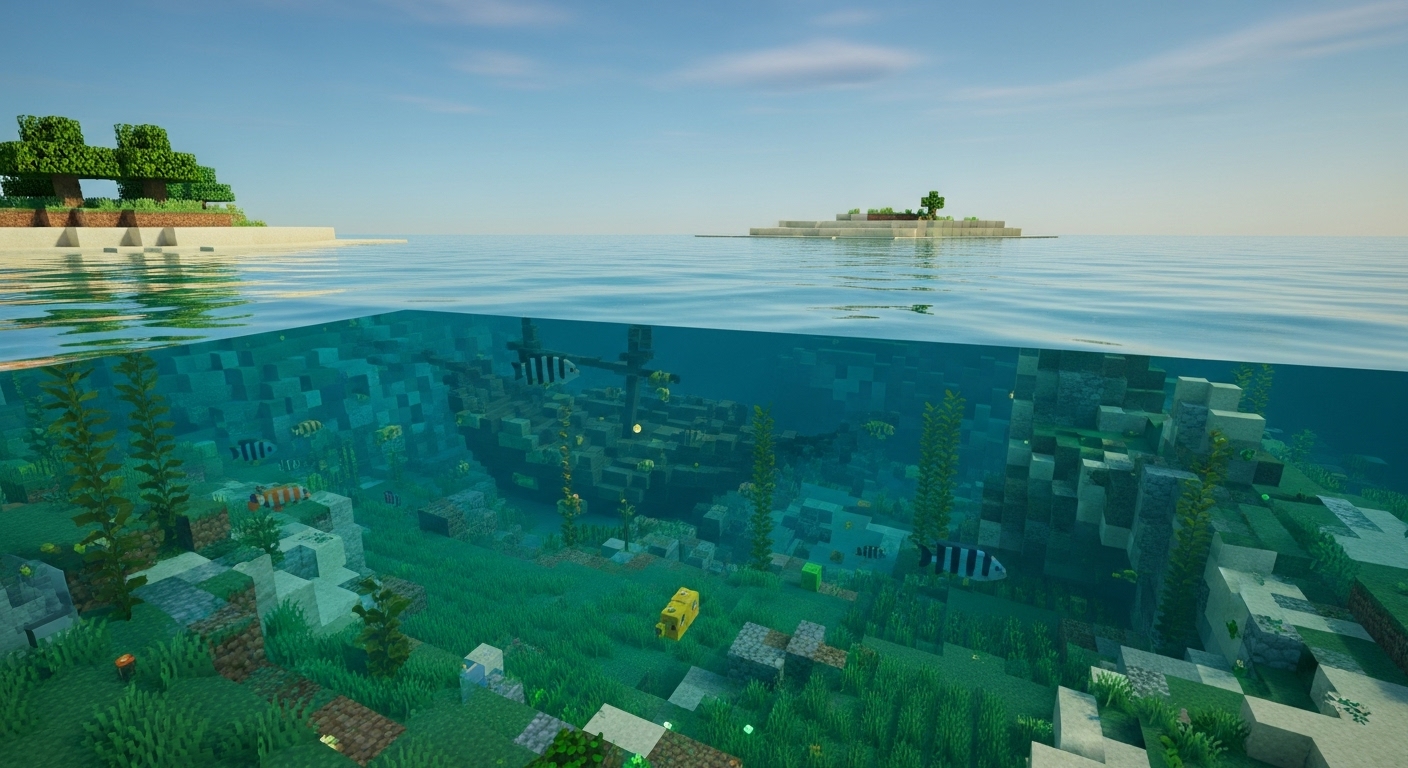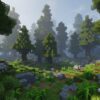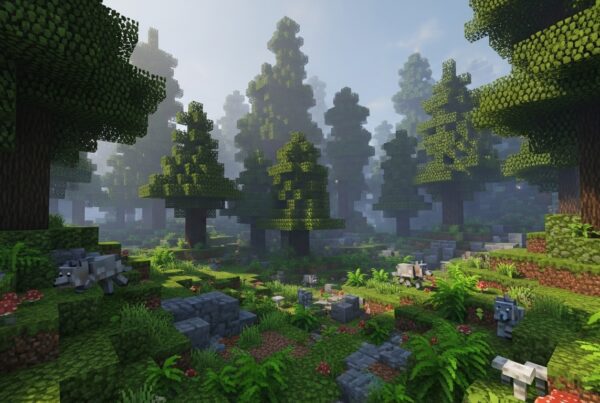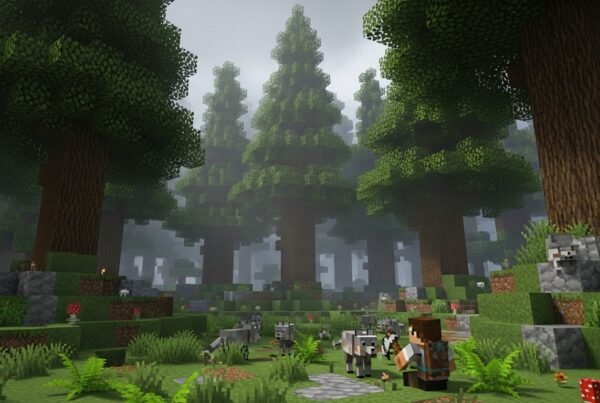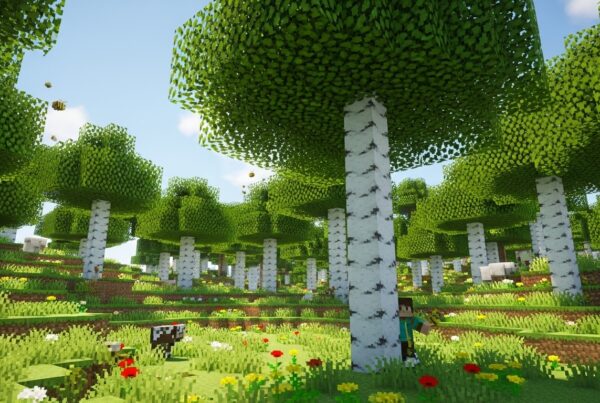The Lukewarm Ocean biome in Minecraft is a peaceful, light-blue stretch of ocean that bridges the gap between cold and warm seas. Known for its clear water, balanced ecosystem, and moderate depth, this biome is ideal for underwater exploration, shipwreck hunting, and ocean base building. Whether you’re a survival player searching for valuable loot or a builder looking for a scenic underwater location, the Lukewarm Ocean biome delivers both beauty and practicality.
Biome Overview
The Lukewarm Ocean is a mid-temperature marine biome that naturally generates between Cold Oceans and Warm Oceans. Its terrain consists mostly of sand, gravel, and clay, with patches of seagrass and kelp decorating the ocean floor.
Key biome traits:
- Climate: Mild; no ice or snow.
- Location: Found between Cold and Warm Ocean biomes.
- Water Color: Light blue to teal; slightly warmer-toned than Cold Ocean water.
- Depth: Moderate; shallower than Deep Oceans but deeper than beaches.
- Lighting: Bright and clear, offering high underwater visibility.
The Lukewarm Ocean biome provides an excellent environment for newer players learning underwater mechanics — safe enough to explore, yet rich with resources and structures.
Common Features
The terrain and generation features of this biome make it one of the most balanced ocean types in the game.
Typical biome features:
- Seagrass and Kelp: Grow in abundance across the sandy and gravel-covered seafloor.
- Sand and Clay Deposits: Common on the ocean bed, useful for crafting and building materials.
- Shipwrecks: Frequently spawn both above and below the waterline, often containing treasure maps, iron, and emeralds.
- Ocean Ruins: Generate on the seafloor, composed mostly of sandstone instead of stone (a visual indicator of its warmer environment).
- Sea Pickles: Found rarely, adding underwater light sources.
Note: Unlike Warm Oceans, coral reefs do not naturally generate in the Lukewarm Ocean biome in Java Edition. However, in Bedrock Edition, coral blocks can appear rarely near biome borders with Warm Oceans.
Mobs in the Lukewarm Ocean
Passive Mobs
- Tropical Fish: Found in groups, adding color and life to the biome.
- Cod and Salmon: Common fish species; a reliable early-game food source.
- Squid: Spawn in mid-depth areas and drop ink sacs.
- Dolphins: Frequently seen swimming in pods; they boost swimming speed when nearby.
- Turtles: Often spawn on adjacent beaches, providing turtle eggs and scutes.
Hostile Mobs
- Drowned: The main threat in the Lukewarm Ocean. They spawn in darker, deeper areas and can wield tridents or fishing rods.
- Guardians: Appear only if an Ocean Monument generates nearby, which happens in Deep Lukewarm Oceans.
Mob Spawn Notes (Java Edition):
- Tropical Fish: high spawn rate, typically in groups of 8.
- Cod and Salmon: moderate spawn rate.
- Drowned: appear in low light or near ruins.
Blocks and Resources
The Lukewarm Ocean biome is a reliable source of crafting materials, decorative blocks, and lootable structures.
Common Blocks:
- Sand
- Gravel
- Clay
- Kelp
- Seagrass
Rare and Special Blocks:
- Sea Pickles (light source)
- Coral (Bedrock Edition only)
- Prismarine (found in ruins or monuments)
Loot Highlights:
- Shipwrecks: Contain paper, maps, emeralds, enchanted gear, and buried treasure maps.
- Ocean Ruins: Offer enchanted fishing rods, coal, wheat, and more treasure maps.
The combination of these resources makes the Lukewarm Ocean biome a valuable location for explorers and builders alike.
Variants of the Lukewarm Ocean
Lukewarm Ocean
The standard version of this biome features shallow to moderate depth, calm waters, and minimal hostile mobs. It’s perfect for setting up underwater farms or beginner ocean bases.
Deep Lukewarm Ocean
A deeper variant that generates farther from shore. It contains more shipwrecks and ocean ruins, but also more drowned mobs. Ocean Monuments can spawn in this variant, making it the best place for players seeking prismarine and sea lanterns.
Exploration and Survival Tips
Recommended Gear:
- Respiration Helmet: Extends breathing time underwater.
- Depth Strider Boots: Speeds up underwater movement.
- Aqua Affinity Enchantment: Speeds up mining underwater.
- Night Vision Potions: Greatly improves visibility below the surface.
Survival Tips:
- Use boats to travel and scout for shipwrecks.
- Bring doors or bubble columns for temporary air pockets.
- Avoid exploring at night to reduce drowned encounters.
- Collect kelp for renewable smelting fuel.
- Tame dolphins by feeding them fish — they can guide you to nearby treasure.
Because of its visibility and moderate mob activity, the Lukewarm Ocean is one of the best biomes for underwater exploration in survival mode.
Java vs. Bedrock Edition Differences
| Feature | Java Edition | Bedrock Edition |
|---|---|---|
| Coral Generation | Does not generate naturally | May generate near Warm Ocean borders |
| Ocean Ruin Material | Sandstone | Sandstone |
| Mob Spawns | Drowned, Tropical Fish, Cod, Squid | Drowned, Cod, Pufferfish (rare), Squid |
| Water Color | #45ADF2 (light teal) | Similar, but slightly brighter |
| Fog Color | #041633 (light blue underwater) | Slightly lighter blue tone |
These subtle differences can affect the look and feel of underwater exploration depending on which version you’re playing.
Technical Details
- Biome ID: minecraft:lukewarm_ocean
- Deep Variant ID: minecraft:deep_lukewarm_ocean
- Introduced In: Minecraft 1.13 – Update Aquatic
- Temperature Value: 0.5
- Precipitation: Rain
- Top Block: Sand
- Depth: Medium (sea level at y=63)
Building and Exploration Ideas
The Lukewarm Ocean biome’s clear visibility and calm waters make it ideal for:
- Underwater bases with glass tunnels and coral gardens.
- Kelp and seagrass farms for sustainable fuel and decoration.
- Turtle sanctuaries along nearby beaches.
- Treasure-hunting expeditions, as shipwrecks often spawn close together.
- Scenic boat routes connecting land biomes and island builds.
Its tranquility and accessibility make it a perfect mid-game biome for creative underwater construction.
Version History
- Java Edition 1.13 (2018): Added with the Update Aquatic.
- 1.14–1.16: Adjusted mob spawn rates and structure generation.
- 1.18: Improved ocean floor composition; more clay and gravel patches added.
- 1.20+: Water fog and color adjustments for better visibility.
Differences from Other Ocean Biomes
| Biome | Water Color | Common Mobs | Coral | Difficulty |
|---|---|---|---|---|
| Cold Ocean | Dark blue | Cod, Salmon | None | Low |
| Lukewarm Ocean | Light blue | Tropical Fish, Squid | Rare/None | Moderate |
| Warm Ocean | Bright turquoise | Tropical Fish, Pufferfish | Abundant | Low |
| Deep Lukewarm Ocean | Teal | Drowned, Squid | Rare | Moderate–High |
The Lukewarm Ocean is the perfect “middle ground” between colder and warmer waters — calm, colorful, and resource-rich without being overwhelming.
Fun Facts
- The Lukewarm Ocean was introduced during the Update Aquatic, revolutionizing ocean exploration.
- Its water color is one of the most photogenic in Minecraft, especially under daylight.
- Dolphins spawning here are more common than in cold oceans, making treasure hunting easier.
- The biome’s structure composition uses sandstone ruins, a unique distinction among oceans.
Conclusion
The Minecraft Lukewarm Ocean biome offers a beautiful balance between safety, exploration, and resource gathering. With its calm teal waters, friendly marine life, and opportunities for underwater bases, it’s one of the best environments for players looking to experience the full beauty of Minecraft’s aquatic world. Whether you’re hunting for treasure or crafting a glass-domed ocean base, the Lukewarm Ocean biome provides everything you need for an unforgettable underwater adventure.
